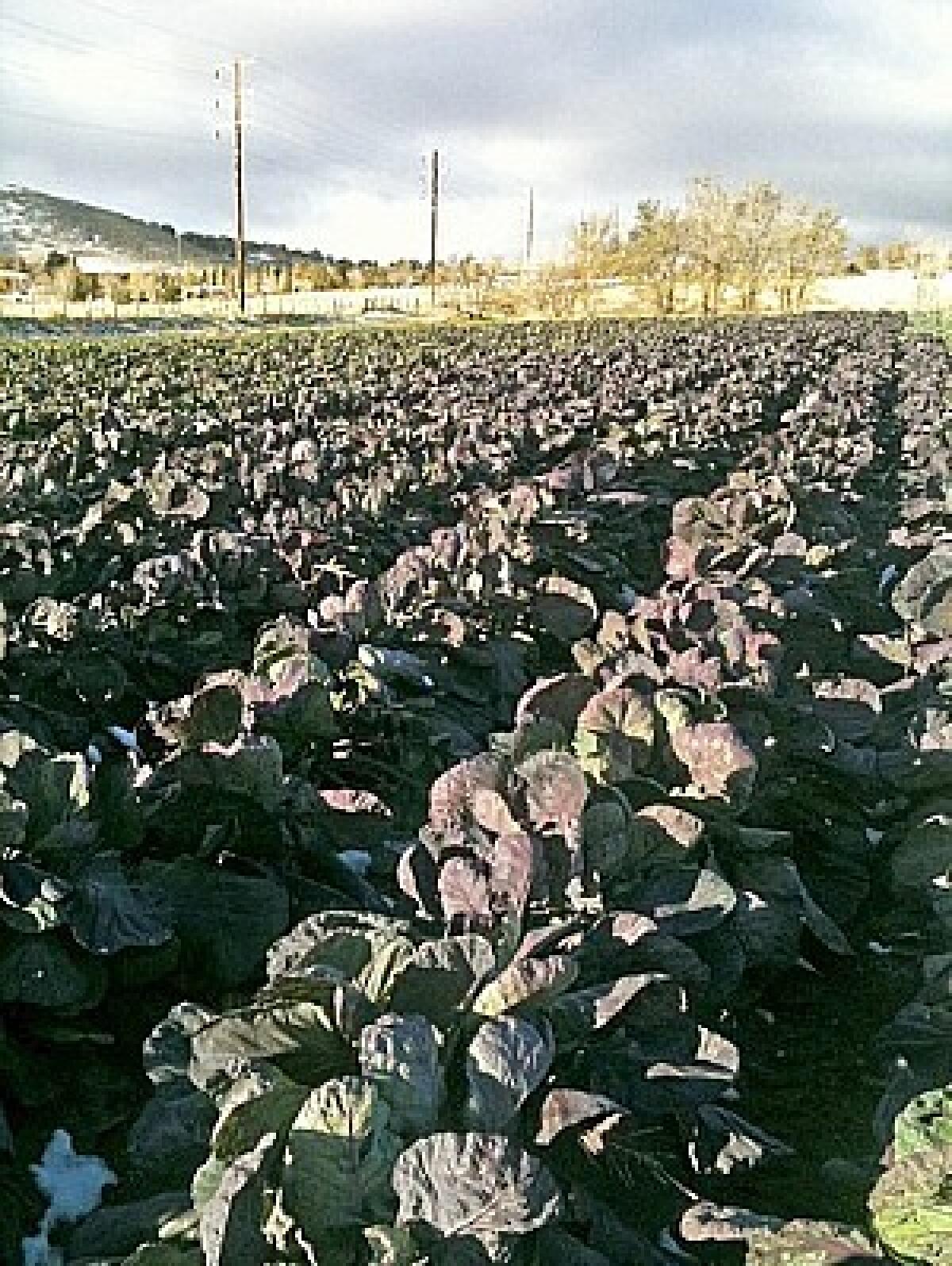Market Watch: Red Brussels sprouts

- Share via
Purple variants of common vegetables like broccoli, cauliflower, asparagus and potatoes have been increasingly popular at farmers markets in recent years, but none is as intriguing as the red Brussels sprouts just now showing up at the Santa Monica farmers market. Beautiful, tasty and different, they seem sure to make a splash.
It’s hard to imagine a farmer more on the prowl for novel specialty produce than Alex Weiser of Weiser Family Farms. He learned of red Brussels sprouts from Erin Eastland, executive chef of Cube Marketplace & Café, who had experimented with growing them on a rooftop in downtown Los Angeles. She liked them but thought they’d do better in a colder climate, since Brussels sprouts grow sweetest when kissed by frost, and asked Weiser if he’d be willing to put in a planting.
He consulted the bible of his trade, Elizabeth Schneider’s “Vegetables from Amaranth to Zucchini,” became further intrigued and ordered seeds of the classic red variety, Rubine, from Territorial Seed Co. He put in 8,000 plants, about three-quarters of an acre, at the coolest of the three locations where he grows, in Tehachapi, Calif., where it was 16 degrees (more than a kiss of frost!) Wednesday night.
Weiser brought the first samples to market last Wednesday. A bit smaller than typical Brussels sprouts, and not quite as tight, they’re deep reddish purple both inside and out, splashed with green — Christmas colors — and white in the stalks.
“The cool part is that they keep their dark color when cooked,” Eastland said. Compared with regular Brussels sprouts, “they have more of a snap to them, a spicy, cabbage-y, earthy taste,” she added.
Eastland sautés them with slices of apples, onions and red cabbage, dashed with cider vinegar, and serves them as an accompaniment to game. But the dish is delicious by itself, the vinegar’s tang serving as a foil to the sweetness of the sprouts.
The links to cabbage are not surprising, because the Rubine variety is a cross between red cabbage and green Brussels sprouts (very likely crossed back to Brussels sprouts) made by a Dutch breeder, C.N. Vreeken, in the 1940s.
So if red Brussels sprouts have been around that long, why haven’t they been more popular? They have occasionally appeared over the years at high-end produce stores in New York, and they’re not uncommon in home gardens in England, where they are starting to be sold in supermarkets. But Weiser said it appears that Rubine is lower-yielding than standard green varieties, based on his limited experience so far, and it remains to be seen whether the premium price he is charging at farmers markets, $6 a pound, will cover the expense of growing them.
Starting next week or soon thereafter, through December and January, Weiser expects to offer red Brussels sprouts at all his markets, including Santa Monica, Hollywood, Pasadena, Beverly Hills, Claremont and Long Beach Sunday.
He is already planning to try growing other, newer varieties of red Brussels sprouts next year. “I really like growing purple,” he said.
More to Read
Eat your way across L.A.
Get our weekly Tasting Notes newsletter for reviews, news and more.
You may occasionally receive promotional content from the Los Angeles Times.








